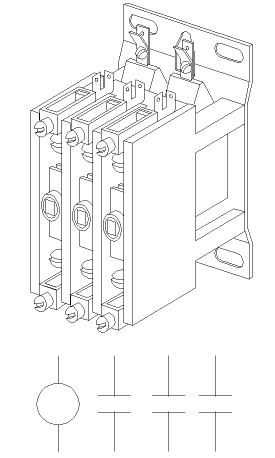Contactors

The buttons demonstrate how the contacts pull in when the coil is energized. The schematic symbol also toggles showing the contacts in the open and closed conditions. Contactor coils are available in several voltages, for example; 24 VAC, 120 VAC, 208 VAC, 230 VAC, or dual rated at 208/240. A typical use for a contactor is using a 24 VAC control circuit to switch a high voltage/high amperage load like a compressor. Some larger contactors have changeable coils.
Although the contacts snap shut quickly, arcing occurs between the contacts as they approach the closed position. This arcing eventually wears out the contacts. It is wise to inspect the condition of contacts reasonably frequently and replace the contactor before they become so pitted and burnt and carboned up that the compressor (or whatever load) is placed in danger. If contacts stick shut, a compressor can continue operating regardless of any operating or safety controls that may open. It can continue operating in the absence of evaporator and/or condenser fan motors which can cause compressor failure in short order.


